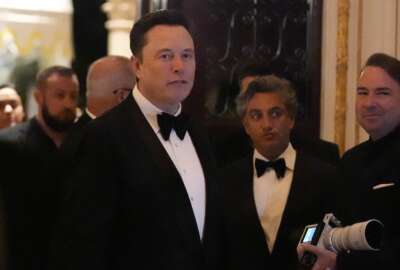Brick and mortar: Where industry acts like government
The government has a history of building monumental projects. In that sense, it's always acted like great American companies.
The Obama and Trump administrations have at least one thing in common: a fascination with Silicon Valley.
Now Silicon Valley is beginning to find a way in which to imitate the government, namely the construction of monuments. The evidence: Apple’s new $5 billion headquarters. I admit, I’m drawn into the rush of interest in this structure. The giant, round building, nearly a mile in outside circumference, is about to receive its first occupants. It will eventually house 12,000 of Apple’s 116,000 employees.
If you look hard, you can find a single picture of the building on Apple’s own website. But no mention. I probably didn’t read deeply enough into the 10K filing. Apple wants publicity about the building, but on its own terms. So it’s given tours to selected, presumably sympathetic writers. The company is both modest and coy.
Published reports run from worshipful reviews to grousing critiques. Writers all see the million-dollar glass doors, endless open collaboration areas, and giant food service court. But they take away the attitudes they bring.
Several reports, including this one from Wired, point out how erection of ambitious headquarters often occur at a company’s apex of wealth and power. Then companies’ fortunes change, they vacate, and leave empty monuments subsequent to the owners repurpose. It’s a mistake, though, to draw cause-and-effect out of construction of a fabulous headquarters. For instance, the Woolworth Building in New York went up in 1912. The company owned the building, dubbed the Cathedral of Commerce, for 85 years. Manhattan is a veritable museum of corporate statements. The then-radical Seagram Tower best represents the 1950s, the imposing Pan Am Tower the 1960s.
Thus the monumental Apple “ring” might be something rare for Silicon Valley, but not for companies. President Donald Trump is famous for his interest in, and construction of, lavish buildings.
For Apple, the building has emotional and practical effects. It was a late-in-life conception of Steve Jobs. It presumably solves some practical problems with the scattered nature of the old headquarters complex. But the lavish expenditures on fussy, precious materials would unlikely fly in the federal sector.
The Trump administration, through its Office of American Innovation, wants the government to operate more like a great American company. Coincidentally, the cancellation of the FBI’s new headquarters project still reverberates. Just last year, the FBI and Apple were locked in a public death battle over cracking iPhone security in the government’s pursuit of a terrorist couple. The FBI won without Apple’s cooperation. But Apple has a stupendous new building, and the FBI is stuck in its unattractive pile.
The government has a history of building monumental projects, literally and figuratively. In that sense, it’s always acted like great American companies. The GSA administrator’s office, in what was once the Interior Department, the rare doorknobs still extant in certain Treasury building rooms, and various details of the Federal Trade Commission building testify to the impetus to build beyond what is strictly necessary to do business.
Apple has its shareholders to deal with. Many of them are miffed at the lavishness of the building compared with what they consider the stinginess of the company’s dividend. Clearly the government should not build with the extravagance exhibited by Apple. But neither should its visible and public agencies’ structures fail to reflect something of the history and grandeur of the nation.
It’s not merely an organizational impetus to express self through construction. It’s a human instinct. The faux chateaus of Potomac or Great Falls attest to that. Except for the stairways, who wouldn’t want to live in Monticello?
So, good for Apple. Now maybe it can throw a little money at fixing all the annoying bugs in iOS.
Copyright © 2024 Federal News Network. All rights reserved. This website is not intended for users located within the European Economic Area.
Tom Temin is host of the Federal Drive and has been providing insight on federal technology and management issues for more than 30 years.
Follow @tteminWFED







